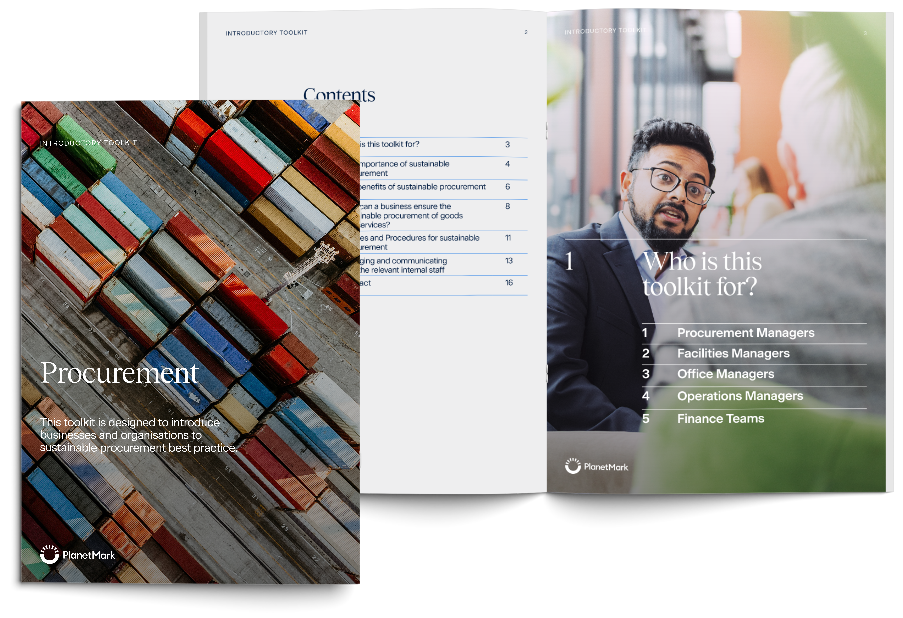Your Sustainable Procurement toolkit
Every product and service you pay for contributes to your total carbon footprint – whether you’re leasing office space or buying construction materials. This Sustainable Procurement toolkit will help you prioritise sustainable practices, so you can make meaningful cuts in your carbon emissions.
Download the toolkit and learn how to:
-
Make procurement decisions for the environment and society
-
Create policies that influence change at a governance level
-
Get your teams on board with your strategies

What is sustainable procurement?
Sustainable procurement is the process of purchasing goods and services to benefit the organisation in a way that’s also socially responsible. This includes making sure that your procurement decisions have minimal environmental impact.
Some examples of sustainable procurement decisions include:
- Sourcing products and services built with circularity models.
- Choosing suppliers who address social and environmental issues.
- Obtaining suppliers’ carbon data to help you identify areas for reduction.
One essential way to champion sustainability in procurement is to reduce your supply chain emissions. Start today with this guide: How to calculate supply chain emissions.
What are the benefits?
Investing in more environmentally responsible procurement practices can have multiple benefits – for your organisation and society.
Cut your supply chain emissions
Make meaningful reductions in your Scope 3 emissions and minimise your overall carbon footprint.
Make cost-effective purchases
Reduce operational costs by procuring sustainable products and services that require fewer resources to use.
Future-proof your supply chain
Help to build a more resilient supply chain, one that supports your carbon reduction goals and climate policy responsibilities.
Learn more about the benefits of reducing your supply chain emissions with our free, on-demand webinar: Mastering Supply Chain Engagement.
How to achieve sustainable procurement
There are many ways to make sustainable and socially responsible procurement decisions, that ultimately help you to reduce your carbon footprint:
Use local suppliers
Consider life-cycle costs
Think about the product’s end of life
Buy recycled goods
Improve data collection
Download the toolkit for these tips and many others.
Further resources to support your journey
Scope 3 clarity: Turning supply chain action into competitive advantage
What are Scope 3 emissions and why do they matter?
5 ways businesses can make a sustainable impact

Talk to us about reducing your carbon footprint
Start taking climate action and create tangible outcomes for your business, society, and nature. Talk to our experts to learn how we could help to measure and reduce your carbon emissions, including throughout your supply chain.
